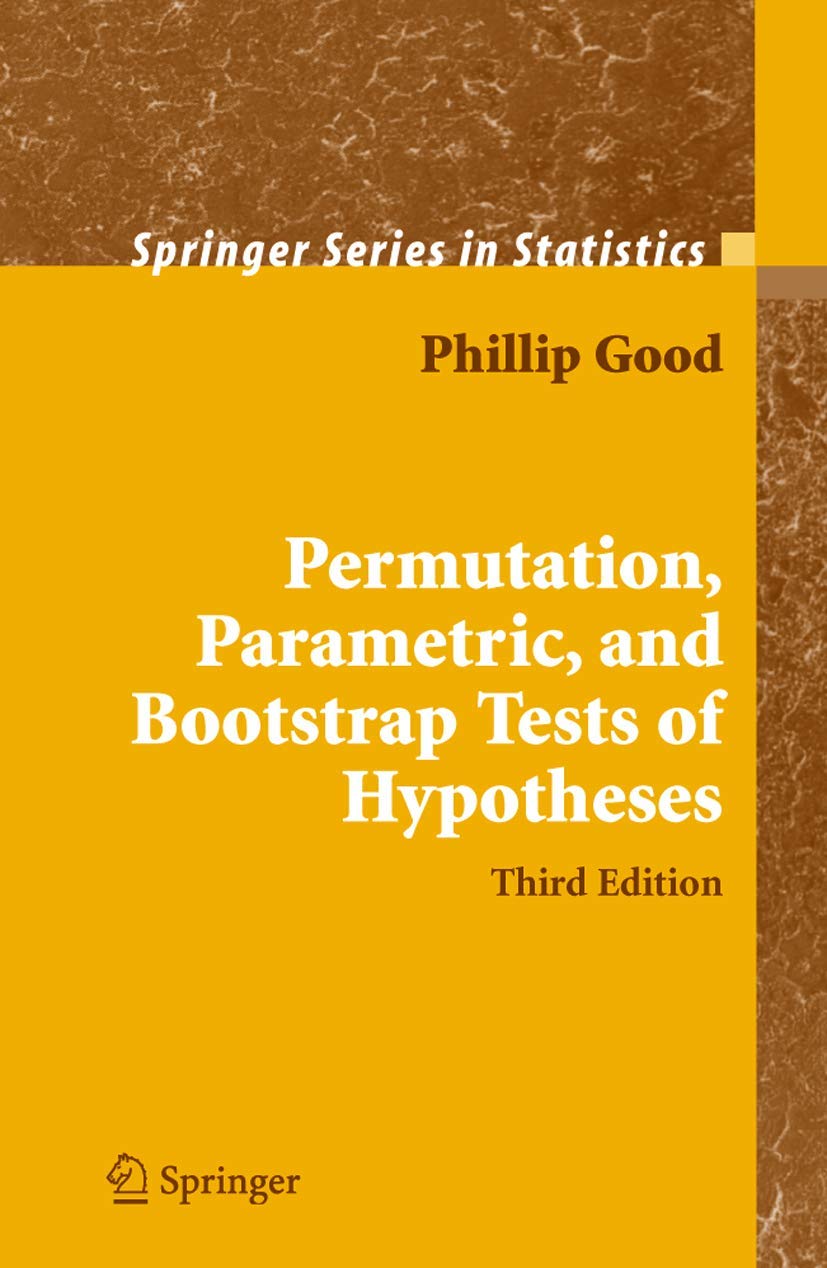Permutation, Parametric, and Bootstrap Tests of Hypotheses (Springer Series in Statistics)
Permutation, Parametric, and Bootstrap Tests of Hypotheses (Springer Series in Statistics) is backordered and will ship as soon as it is back in stock.
Couldn't load pickup availability
Genuine Products Guarantee
Genuine Products Guarantee
We guarantee 100% genuine products, and if proven otherwise, we will compensate you with 10 times the product's cost.
Delivery and Shipping
Delivery and Shipping
Products are generally ready for dispatch within 1 day and typically reach you in 3 to 5 days.
Book Details:
-
Author: Phillip I. Good
-
Brand: Springer
-
Edition: Softcover reprint of hardcover 3rd ed. 2005
-
Binding: Paperback
-
Format: Import
-
Number of Pages: 316
-
Release Date: 01-12-2010
-
ISBN: 9781441919076
-
Languages: English
About The Book:
This text provides a comprehensive theoretical background in hypothesis testing and decision theory with an emphasis on real-world applications across various fields. The focus is on permutation methods, offering a distribution-free alternative to traditional parametric methods like the bootstrap and asymptotic parametric approximations.
Key highlights:
-
Real-World Illustrations: The book includes extensive examples from areas such as biology, business, clinical trials, economics, geology, law, medicine, social science, and engineering.
-
Expanded Exercises: The new edition contains twice the number of exercises to help reinforce key concepts and application.
-
Shift in Focus: The author argues that permutation methods are now the primary method for testing hypotheses, driven by four key factors:
-
The demand for powerful statistical methods in applied fields, especially when no well-tabulated distribution is available.
-
Regulatory pressures for methods that provide exact significance levels rather than approximations.
-
Recognition that real-world data often comes from mixtures of populations.
-
The acknowledgment that missing data is inevitable and balanced designs are rare.
-
Although permutation tests are emphasized, certain robust parametric tests, like Student’s t-test, continue to hold significance in statistical practice. This book is essential for anyone involved in statistical practice, especially those working in biostatistics and decision-making contexts.





